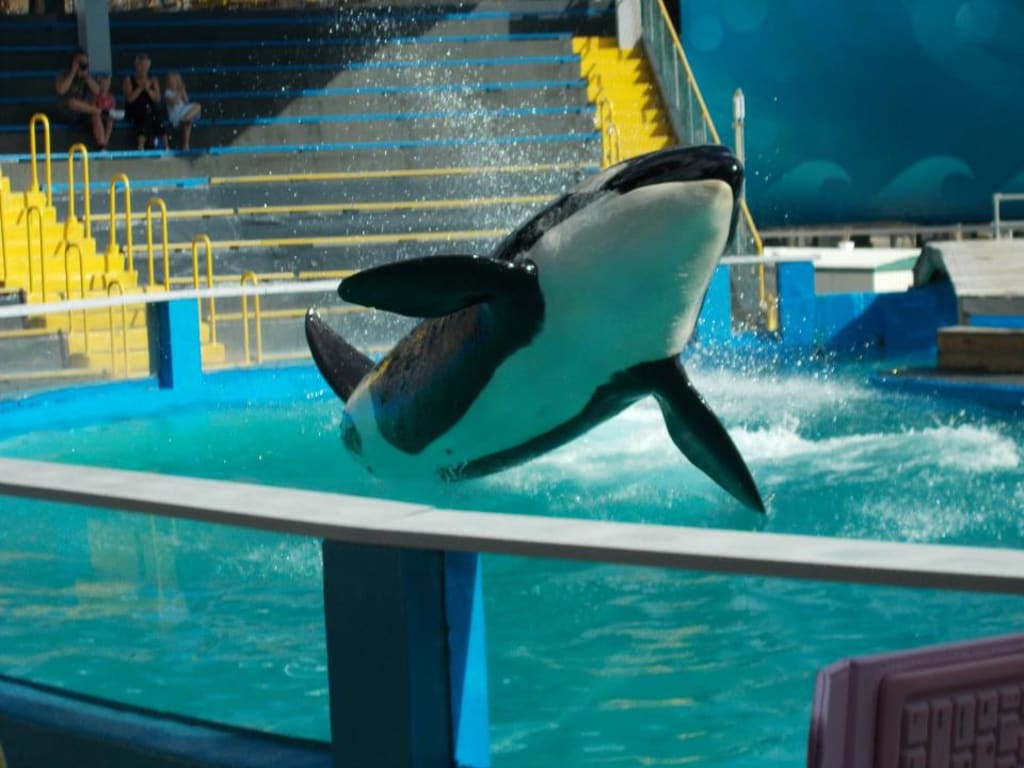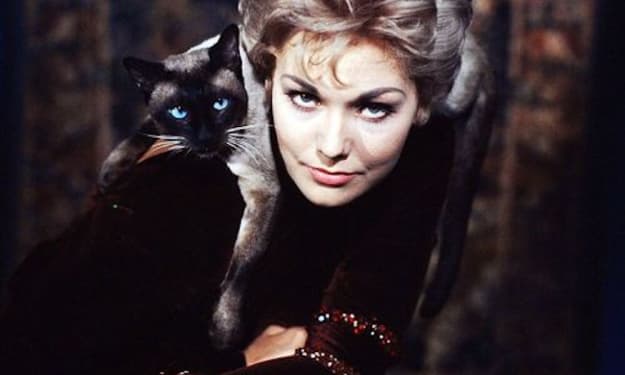Freeing Lolita the Killer Whale Is Not an Option
Animal rights extremists have been targeting Miami Seaquarium over Lolita for years, saying that she should be "released" when in reality, that is not an option.

Lolita is a Southern Resident killer whale who was believed to have been born in 1966 to the Southern Resident orca population. She was collected on August 8, 1970 off the coast of Penn Cove, Washington where she was kept in a pen-based facility for about a month before she was sent to Miami Seaquarium in Key Biscayne, FL. There, she spent the first ten years of her life at the facility with a male orca named Hugo, who was believed to have come from the same pod as she did, until his death in 1980. She has been the only orca in its care since. Today, she currently resides at the facility with four Pacific white sided dolphins, who serve as her companions, and is one of two living killer whales to have been collected from the Pacific Northwest during the 1960s and 70s. Yet, despite the fact that Lolita continues to thrive at Miami Seaquarium, animal rights extremists want Lolita to be “released” from the only home she has ever known for the last 48 years by putting her in a potentially dangerous “return-to-the-wild” that would be run by those with very little to no expertise in animal care. I am here to explain why freeing Lolita may not be in her best interest.
Since the 1990s activists have targeted Miami Seaquarium for even having Lolita in their care despite the fact that she has learned to trust people and view them as members of her very own little pod, which consists of Lolita herself, her trainers, and the Pacific white sided dolphins she shares her habitat with. While the pool where she resides may be “small” for a killer whale habitat, she continues to thrive in it and moving her from that small pool, as ideal as it sounds, may not be in her best interest because she does not like change and has her very own routine.
At the Miami Seaquarium, Lolita has a very simple life that serves as her regular daily routine. In fact, ever since she first came to the Miami Seaquarium in 1970, she has been cared for by her trainers and veterinarians. Over the years, Lolita has learned to trust people thanks to her possible brother/cousin Hugo, who taught her how to trust trainers and enjoy daily routines. Her daily routine begins at round 9:45 AM when the trainers conduct her first feeding session. From there, Lolita, who performs two shows a day, will spend the majority of her time playing with her trainers and Pacific white sided dolphin companions. Playtime is very important to animals in human care and it helps provide Lolita the stimulation and exercise she needs throughout the day. It also strengthens her relationship with the trainers. In addition, even when there is no show going on, Lolita always gets to spend quality time with her trainers, who kind of serve as her surrogate pod, just like the dolphins do. Despite many claims made by activists, Lolita and her dolphin companions are not forced to perform in any shape or form. This is because their training is based on positive reinforcement, trust, and mutual respect between trainers and animals. During private sessions and shows, trainers will ask animals to perform certain behaviors and the animals will have a choice between doing the asked behavior or ignoring it all together. If they choose to do the asked behavior, they will either get a treat, an EED (environmental enrichment device), or a rubdown. If not, then, they will be ignored for only a few seconds before trying again. Yet, regardless of what behavior animals display throughout the day, they still get the same amount of food, affection, and enrichment throughout the day. In fact, all the behaviors Lolita performs in the shows are all natural surface behaviors that you would see a wild orca display during a whale watch trip out in the ocean, just take away the trainer. In conclusion, take a look into Lolita’s daily life; all training sessions, whether they take place during a show or not, are all meant to keep the animals healthy and stimulated during their daily lives.
The main reason why activists “want” Lolita is the fact that they claim that her current habitat, the Whale and Dolphin Stadium, formerly known as the “Whale Bowl,” is “illegally” small. As the only killer whale living under Seaquarium’s care, activists also insist that she is “alone” when that is truly not the case. Keep in mind that Lolita was born as a member of the Southern Resident killer whale population off the coast of Washington State. She is also thought to be a member of the L-2 sub pod with her mother, L-25, also known as Ocean Sun, supposedly alive. Activists also claim that they want Lolita for themselves in order to place her in a “sea pen” where she would be able to “interact” with wild orcas while not being given much human contact. In addition, they even argue that Lolita might have some memories of her short life with her wild birth pod because of accounts of how people would play Southern resident killer whale calls to her in the past.
While there is no arguing that these activists are compassionate about their cause, here are few things that need to kept in mind when addressing the nature of Lolita’s situation. Lolita is 20 feet wide, while her pool is about 3 to 4 times her bodyweight. While the pool is indeed too small to house killer whales, it’s no way illegal and it’s not as small as it seems. She is also not alone at all, for over the past 38 years, Lolita has enjoyed the companionship of Pacific white sided dolphins, bottlenose dolphins, California sea lions, a long-finned pilot whale, and a Risso’s dolphin. This also includes the company of her trainers and veterinarians. As for Lolita’s wild birth pod, many of the original members of L-25 sub pod who were alive at the time when she was first collected have long since died while the dynamics of this particular group have completely changed over the years.
When activists talk about their “plan” to release Lolita into wild after spending nearly fifty years in human care, they make it sound like a scene from Free Willy where the titular whale is released back into wild and reunites with his wild pod as they swim into the sunset. In reality, releasing a long-term captive killer whale like Lolita would not only be risky to her own well-being, but may also result in the animals not integrating with the wild pod in question. This is because in order for the release of any animal species into the wild to be considered “successful,” the animal must first be able to forage for food on their own, be able to adapt to their former range without interference, and be able to integrate into the wild population as a whole. While bottlenose dolphins can integrate into local pods that are nearby and harbor porpoises can venture off on their own, killer whales have a complex matriarchal system in which pods only associate with whoever their mothers, siblings, cousins, uncles, and aunts have introduced them to. Killer whale pods often don’t accept outsiders into their pods. However, in the case of rescued juvenile orca Springer, interactions with her pod were aggressive until one of her aunts stepped in to raise her. Yet, the reason why her release is considered successful is because during the month she spent in a sea pen as part of her own rehabilitation, she was given very little to no human contact and the plan was to reintroduce her into her birth pod and was also a rescued orphan. In the case of marine mammals in human care, they have completely different immune systems than their wild counterparts. Where the animals are used to residing in clean and filtrated pools, they may not be immune to any diseases and viruses that are found out in the ocean. Some activists often argue that Lolita could contribute calves to the Southern Resident killer whale population, but killer whales often stopped breeding in their early forties while Lolita is believed to be over 50 years old. She would never be able to contribute any calves to the small population of about 78 animals.
Take Keiko, the star of Free Willy, for instance. About $23 million was spent on his rehabilitation and release into waters off the coast of Iceland. Ye, he was released after all funds to continue to keep his sea pen running ran out while all attempts to integrate Keiko into a wild pod ended with aggression between animals. Keiko would eventually spend two months on his own before making his way to the shores of Norway where he often sought out human contact. He would remain there until his death from pneumonia in 2003, but a necropsy was never performed. To this day, his release is considered to be a failure.
Remember, just because Lolita may have some memory of her short life in the wild, it does not mean that she would make a great candidate for release. Lolita has lived under the Sequarium’s care for almost 50 years and has lived nowhere else. While moving her to another facility to be with other orcas may be ideal, at this point though, the stress of being transferred from one facility to another may possibly kill her and this animal does not like change. She’s has a routine, and most of all, she’s old in orca years. This is why Lolita is not the best candidate for release.
Now that you have gotten to know Lolita, and how she is cared for at Miami Seaquarium, you can now understand why she is not a great candidate for release into the wild. It’s because first of all, she is a creature of habit who does not like change; second, Southern Resident killer whales are endangered as a result of pollution and starvation and Lolita would not be able to contribute any calves to this dying population; and finally, she would never be able to survive on her own. So in conclusion, due to her old age, having to have fully trusted people as members of her own surrogate pod, and the situation that the Southern Resident killer whales are in, it’s safe to say that Lolita is better off being at the facility where she is now unless she is moved to another facility that would provide her the same constant care and attention that she receives from her trainers on a daily basis.
About the Creator
Jenna Deedy
Zoo and Aquarium Professional, Educator, Cosplayer, Writer and B.A. in Psychology whose got a lot to share when it comes to animals, zoos, aquariums, conservation, and more.
Instagram: @jennacostadeedy






Comments
There are no comments for this story
Be the first to respond and start the conversation.